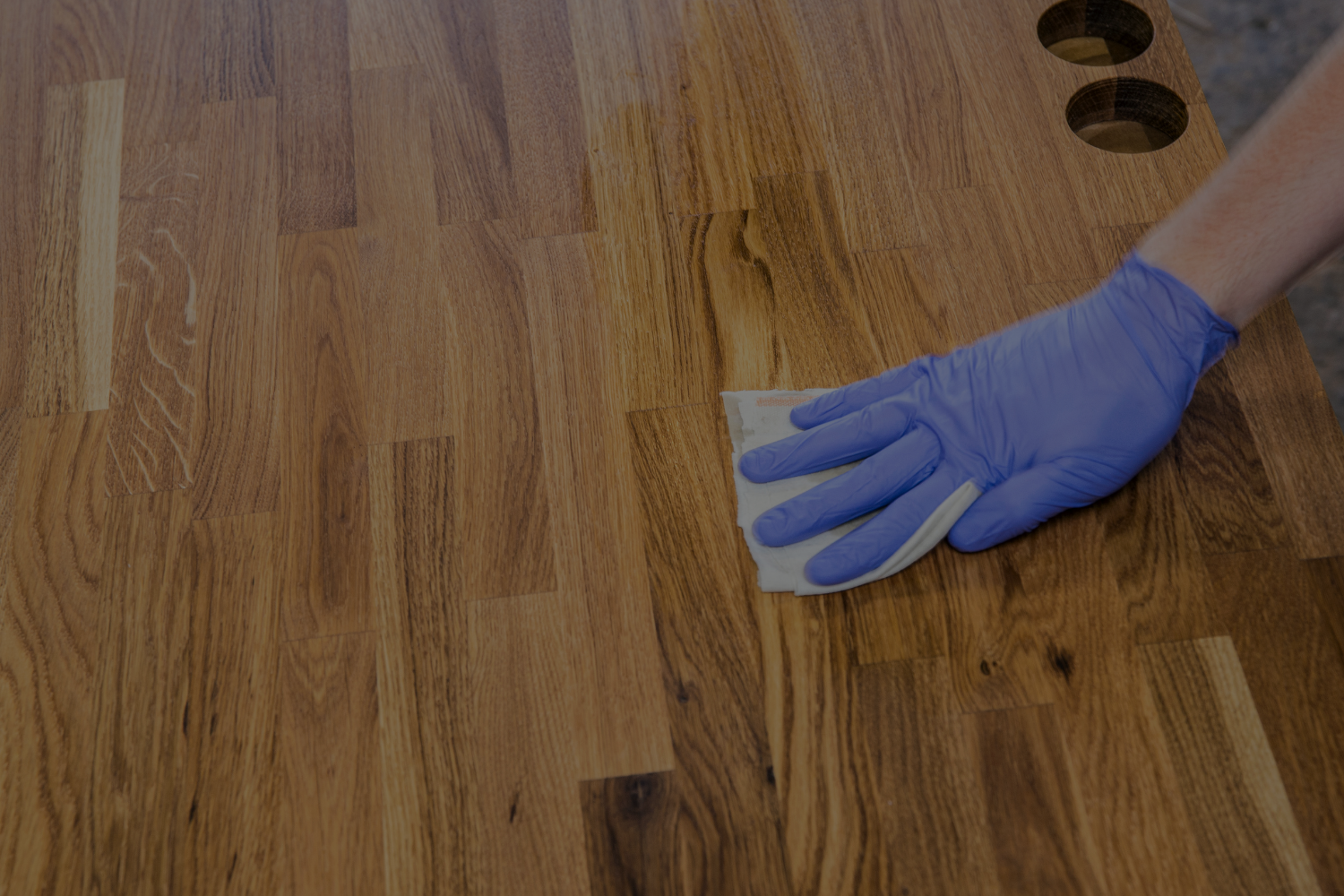Should I Install Butcher Block Countertops?
September 29, 2020Butcher block countertops are a trend that’s been popular with homeowners for some time. They provide a warm, natural aesthetic to a kitchen without compromising modernity or clean lines, so they fit perfectly into contemporary or traditional kitchens.
However, butcher block requires a bit more fuss than sealed granite or quartz, so it’s worth considering the pros and cons before you choose this material for your kitchen. We’ve prepared a comprehensive list here to help you decide whether butcher block countertops are right for you.
Butcher Block Pros
On-Trend
Butcher block is one of the trendiest countertop materials in the design world at the moment. Homeowners who value trends and keeping their kitchen up-to-date might want to invest in butcher block countertops. Butcher block’s lifespan is also shorter than other countertop materials, making it a good choice for homeowners who change their kitchens often.
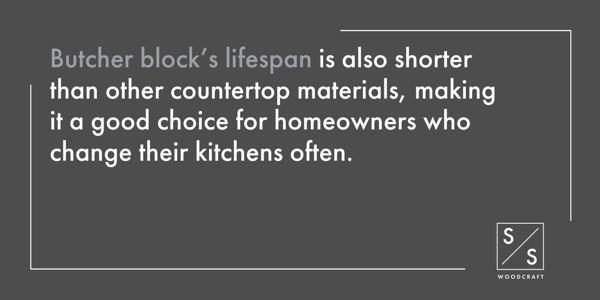
Great for Cooking
Butcher block attracts chefs who like having plenty of space to prepare food. It also emanates the look of professional kitchens, appealing to foodies who want to copy the pros.
Well-maintained butcher block can act as a large cutting board, giving homeowners lots of room to use ingredients and cooking materials. That said, butcher block doesn’t stay pristine very long, so it’s most suitable for people who are okay with marks on their countertop. Like a cutting board, butcher block will age over time, but proper care and maintenance will ensure the aging process is graceful.
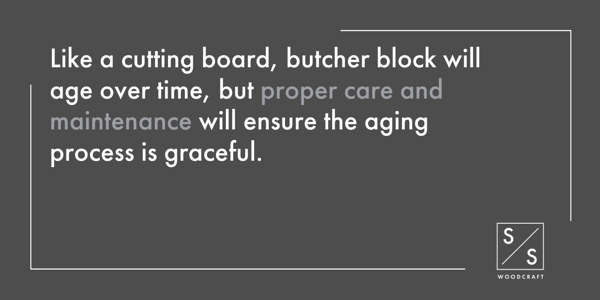
Brings Nature into the Home
Lots of homeowners are seeking ways to bring natural warmth into their kitchens. Butcher block excels in this area. Few other countertop options exude the same natural glow as solid wood, making this a one-of-a-kind design feature. Homeowners who value natural decor and warm color palettes might be especially attracted to butcher block countertops.
Merges the Modern with the Traditional
Modern design once had a rep for being somewhat cold and clean. However, recent trends make use of traditional, natural materials to create simple spaces with plenty of warmth. Butcher block countertops can contribute to this look.
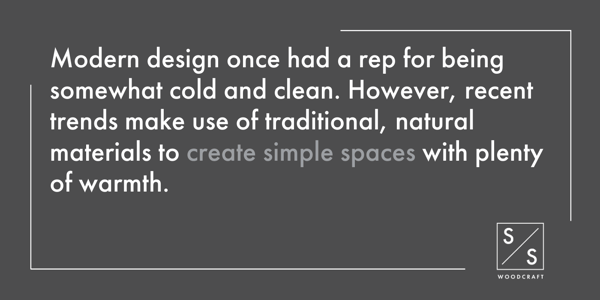
Right now, Scandinavian design is having a moment in the sun. If you look up Scandinavian design for the kitchen, you’ll find dozens of pictures that showcase butcher block countertops. This type of design takes advantage of the basic, natural materials and mild colors that butcher block countertops provide.
Butcher Block Cons
A Bit of Fuss
Butcher block countertops aren’t the most low-maintenance option for your kitchen. Though they’re not as needy as marble, for example, they do need regular attention. Butcher block accumulates marks and stains easily, and once it’s soiled, it’s difficult to clean.
Light stains or spills can often be scraped off with a dough scraper. If you want to get a bad stain out of butcher block, you often have to sand down the material and refinish the exterior.
Butcher block also has to be treated with oil regularly. Homeowners should buy special oil formulated specifically for countertops. Butcher block oil contains minerals that prevent the wood from drying and soaking up stains.
Requires Careful Cleaning
You should be cautious when cleaning your butcher block countertops with any chemical products. The best way to sanitize a butcher block countertop is to use a small amount of dish soap and warm water. This cleans the countertop well without exposing it to harmful chemicals.
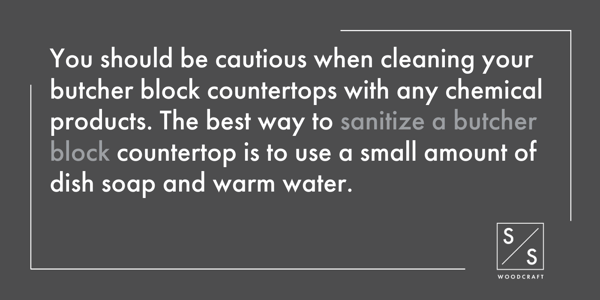
If you have to use bleach, make sure to mix it with water to create a solution that’s safe for your countertop. Butcher block can hold up to a bit of cleaner, but in general, you should try to care for it without using heavy chemicals often.
Reacts to Weather Changes
Since butcher block is made of wood, drastic shifts in the Canadian weather and humidity will cause it to expand and contract. Over time, this might result in some movement of the countertop. Expect your butcher block to expand by about ⅛” in the summer and contract by the same amount when winter comes around.
If your butcher block is next to a wall or an appliance, you’ll need to leave a bit of extra space around it to allow the wood to grow and shrink. Otherwise, you risk causing cracks or warping the countertop.
Ages Quickly
Like we mentioned above, butcher block countertops age more quickly than other materials. This makes it suitable for the homeowner who likes the look of wear-and-tear, or, alternatively, someone who plans to change out their countertops every few years. In any case, remember that your butcher block countertops will begin to show their age as you use them.
Butcher block accumulates scrapes, scratches, stains, and sanding marks over time. Regular mineral oil treatments will help mitigate these effects, but your butcher block certainly won’t look the same at the end of its life as it did at the start.
Relies on Proper Placement
If you’re set on including butcher block in your kitchen, you’ll want to think about where to place it. Since butcher block is more porous than other countertops, it’s wise to avoid putting it around the sink. Consider installing it as part of an island or a breakfast bar. This gives you less surface area to take care of and reduces the risk of it getting wet and growing bacteria or mold.
In Short
If you like the look of butcher block countertops and you’re okay with putting in a little extra maintenance, they can be a great choice for your kitchen. For more information on butcher block and other countertop materials, feel free to call or stop by our Cold Lake showroom! We’d be happy to provide more in-depth countertop guidance and chat about options for your kitchen renovation or project.
.png)
